YOU ARE LEARNING:
Simplifying Fractions

Simplifying Fractions
You can make fractions easier to read by simplifying them.
Pizza A was divided into four slices and two are left. What is this as a fraction?

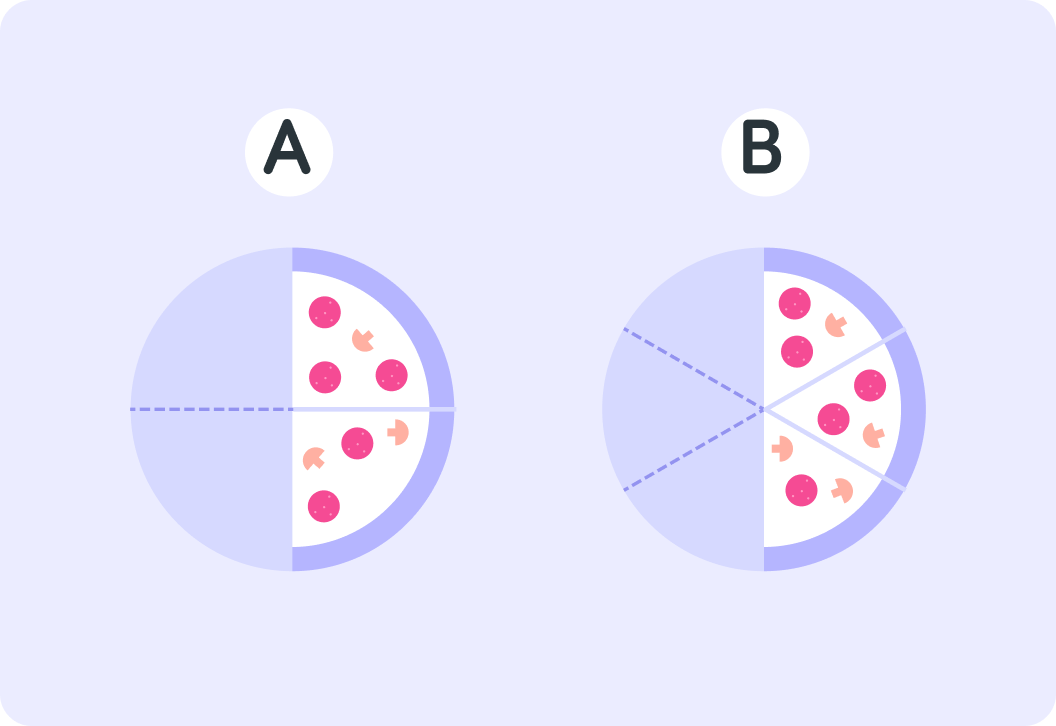
Pizza B was divided into six slices and three are left. What is this as a fraction?


So there are a different number of slices left of each pizza
There are 42 slices left of pizza A. There are 63 slices left of pizza B.

There are a different number of slices but is this statement true or false?
There is the same amount of pizza left in pizza A and in pizza B.


In both cases, the remaining pizza takes up half a plate
So in fact, 42 and 63 stand for the same amount. **** We say they are equivalent to "one half" or 21.

You can change for example 63 into 21 because they are equivalent. To do this, we need to __________ the fraction.


Simplifying fractions
When you simplify a fraction, you make it easier to read. For example, it is much easier to read 21 than to read 9246.

True or false? There is the same amount of cake left in both cake A and in cake B.

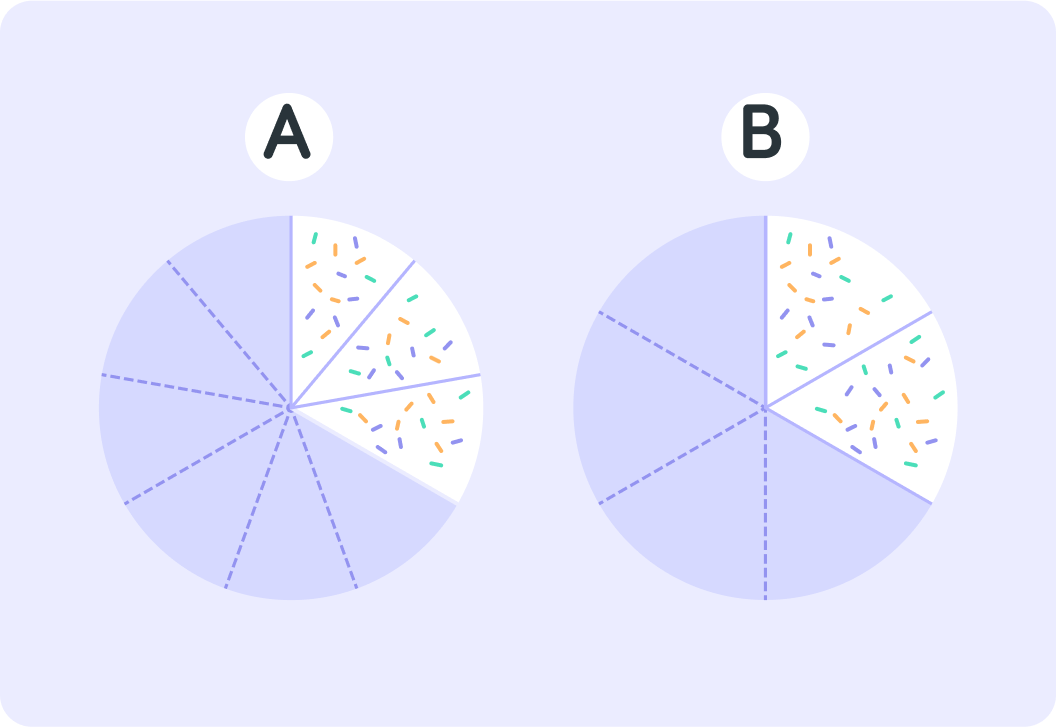
What is the fraction of cake left on plate A?


The fraction of cake on plate B is 62.
This shows that 93 and 62 are equivalent fractions, they are the same amount of cake.

True or false? You can simplify 93 and 62 to 31.

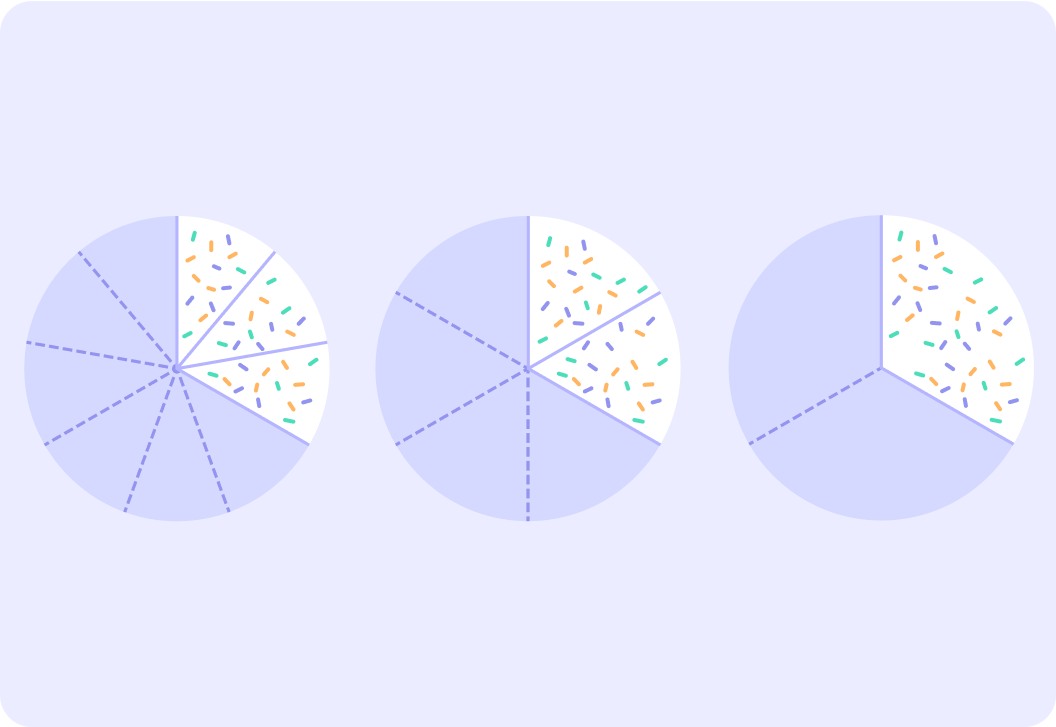
Pizza A has four out of eight slices left or 84. What is the simplified equivalent fraction for this?

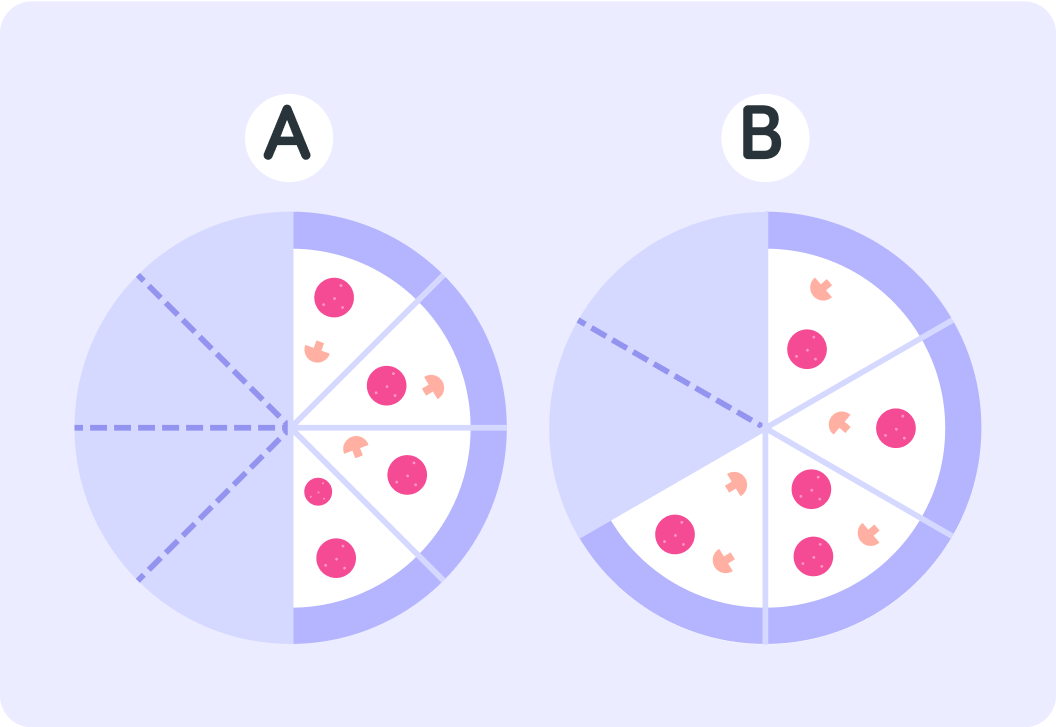
Pizza B has four of six slices left or 64. What is the simplified equivalent fraction to this?


Although both pizzas have four slices left there is more of pizza B left than pizza A.
This shows that 32 and 21 are not equivalent fractions.

Is it correct to simplify 124 to 62?

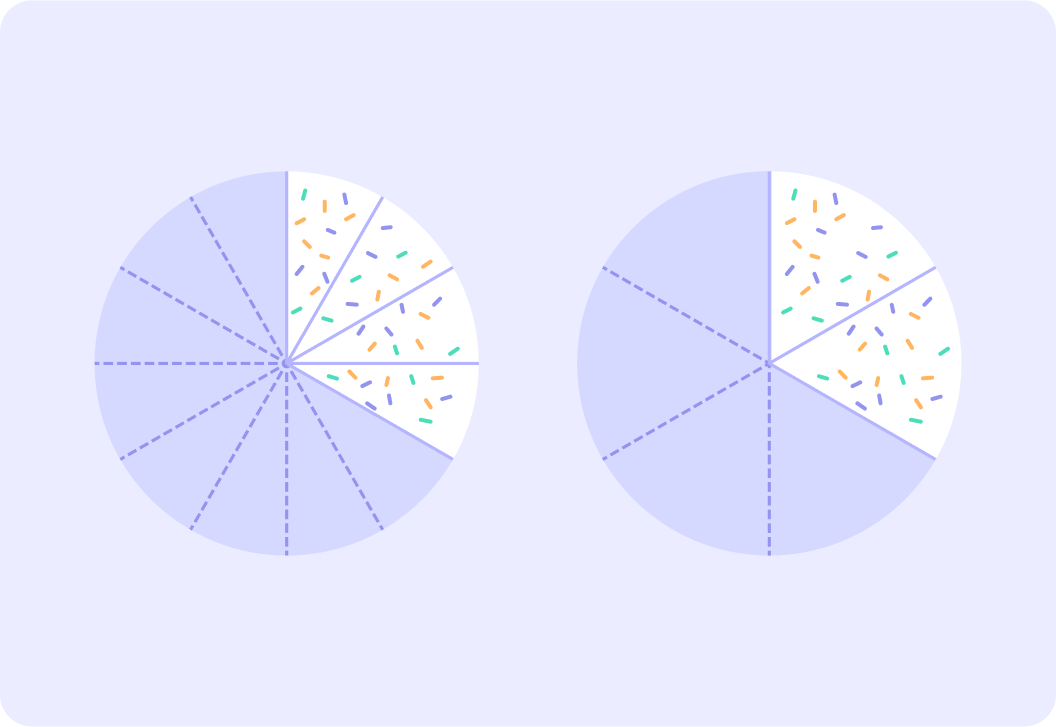
However!
If you simplify 124 to 62, you haven't simplified the fraction fully - it can be simplified further!

Which fraction is the simplest fraction that is equivalent to 124 and 62?


31 is fully simplified - it is as simplified as it can be
Fractions cannot contain decimals, so you can't change 31into 1.50.5, for example.

How simplifying fractions really works
How do you actually get from 93 to 31 when simplifying the fraction?

3012 can be fully simplified to 52. What number have you divided both the numerator and the denominator by?

When simplifying a fraction you must divide the numerator and the denominator by the same number.
30÷612÷6=52 you can see that the same number is used for both the numerator and the denominator.
You have fully simplified a fraction when there is no number that divides into both the numerator and denominator. Which fraction here is not fully simplified?

Which number can we use to simplify 104?

We can divide the numerator and denominator in 104 by 2.
This gives 52 which is fully simplified!
Fully simplify 7224
We can do this in one step or several steps.
First let's notice that both numbers here are even so we can divide them by 2. What to we get when we do that 72÷224÷2=?

Is 3612 fully simplified?

We can simplify further. What happens now 36÷1212÷12=?

We have simplified the fraction from 7224 to 31.
This is now fully simplified!
Fully simplify 1512.

Fully simplify 6448.

Summary! Simplifying fractions makes them easier to read
The original fraction and the simplified fraction have to represent the same amount.

You have fully simplified a fraction when the numerator and denominator can't get any smaller
This means that there is no number that divides into both the numerator and denominator.

To fully simplify 7530: First 75÷530÷5=156 and then 15÷36÷3=52.
Or do it in one step 75÷1530÷15=52

